Monument Valley is a region of the Colorado Plateau characterized by a cluster of vast sandstone buttes, the largest reaching 1,000 ft (300 m) above the valley floor. It is located on the Arizona-Utah state line, near the Four Corners area (intersection of the Arizona, Utah, Colorado and New Mexico state boundaries). The valley lies within the range of the Navajo Nation Reservation and is accessible from U.S. Highway 163.
Monument Valley has been featured in many forms of media since the 1930s. Director John Ford used the location for a number of his best-known films. In the words of critic Keith Phipps, “its five square miles [13 square kilometers] have defined what decades of moviegoers think of when they imagine the American West.” Close to 50 films have been shot in the area, or include some footage. Among the more notable ones are Stagecoach (1939), Back to the Future, Part 3 (1990), Forrest Gump (1994) and the Lone Ranger (2013). In addition to the movies, television shows, commercials and magazine photos have all made the images of Monument Valley familiar.
On our photo safari last month, Bill, Barry and I made a stop there. It’s a little over 2 hours from Moab and it’s on the road home. We spent the night at the View Hotel inside the Navajo Tribal Park where we were able to get some sunset scenes before embarking on our early morning tour the next day. Here’s one of my favourites taken just after sunset from the back terrace of the hotel. The two buttes on the right are appropriately named the Mittens, the more distant butte is Big Indian Butte. They’re all “beauts”, towering well above the valley floor.
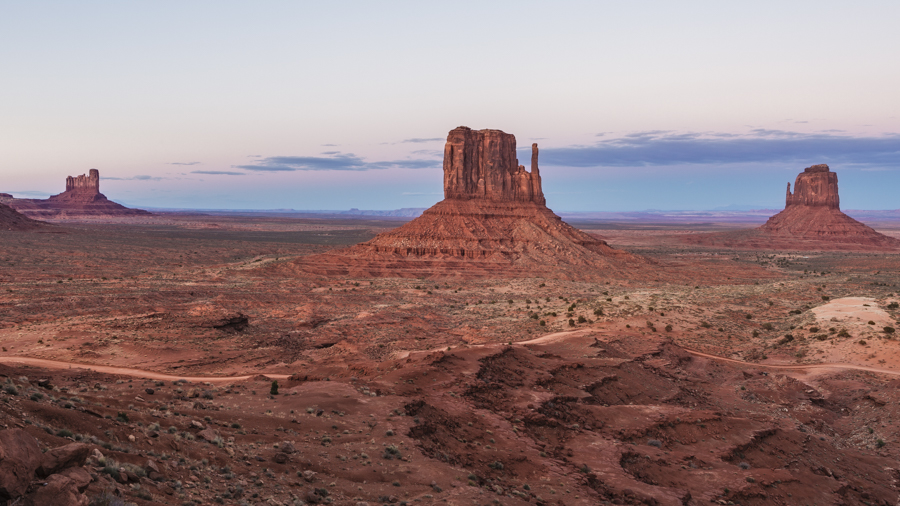
We arose early for our sunrise tour, led by guide Ray Begay a native of the valley and an accomplished photographer. He performed his job well, leading us to the favourites sites, always timed to capture the best light as the sun rose in the sky. The next photograph features Yei Bi Chei (left) and the Totem (centre), shot from the base of some dunes in the foreground.
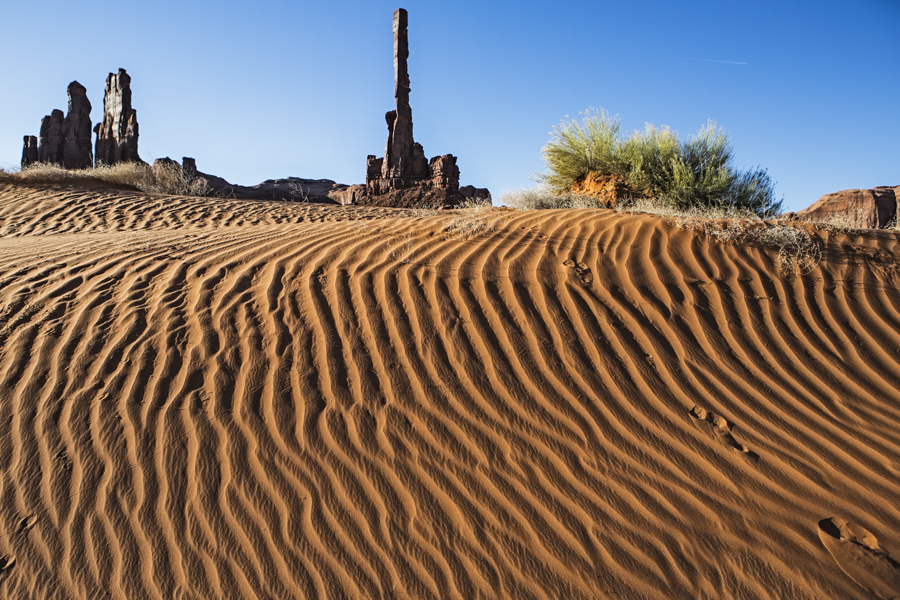
Later in the morning, we moved along to an iconic site, the Ear of the Wind. I’ve visited and photographed this area on three prior occasions and I always look forward to seeing it.
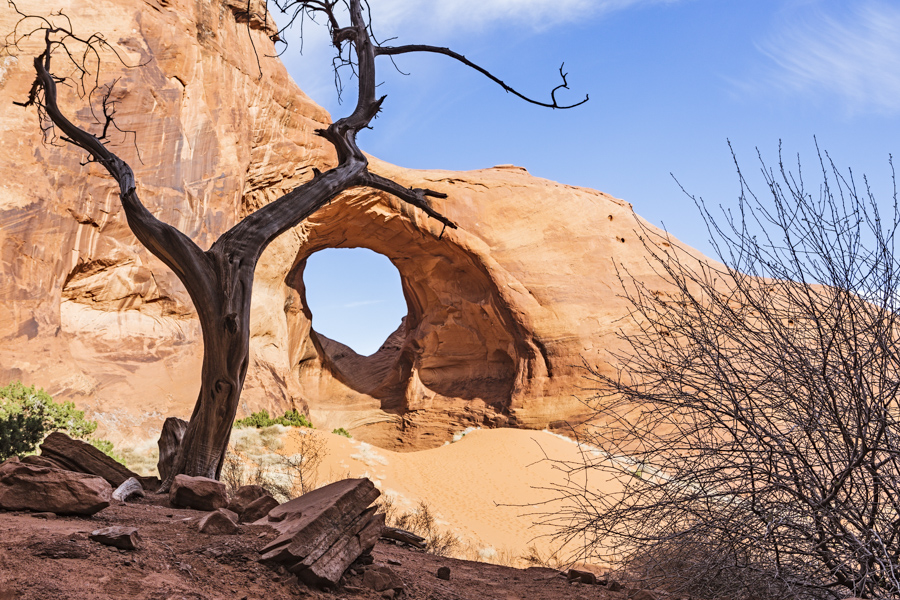
Next on the itinerary was an area known for its petroglyphs, ancient carving in the rock, dating back as far as 1000 year. I was most impressed by a rock formation known as Sun’s Eye Arch. This photo shows one of the openings in this formation. Any credit for this photo’s composition goes to our guide, Ray who carefully positioned us to align the vertical lines in the rock with the corners of the opening above.
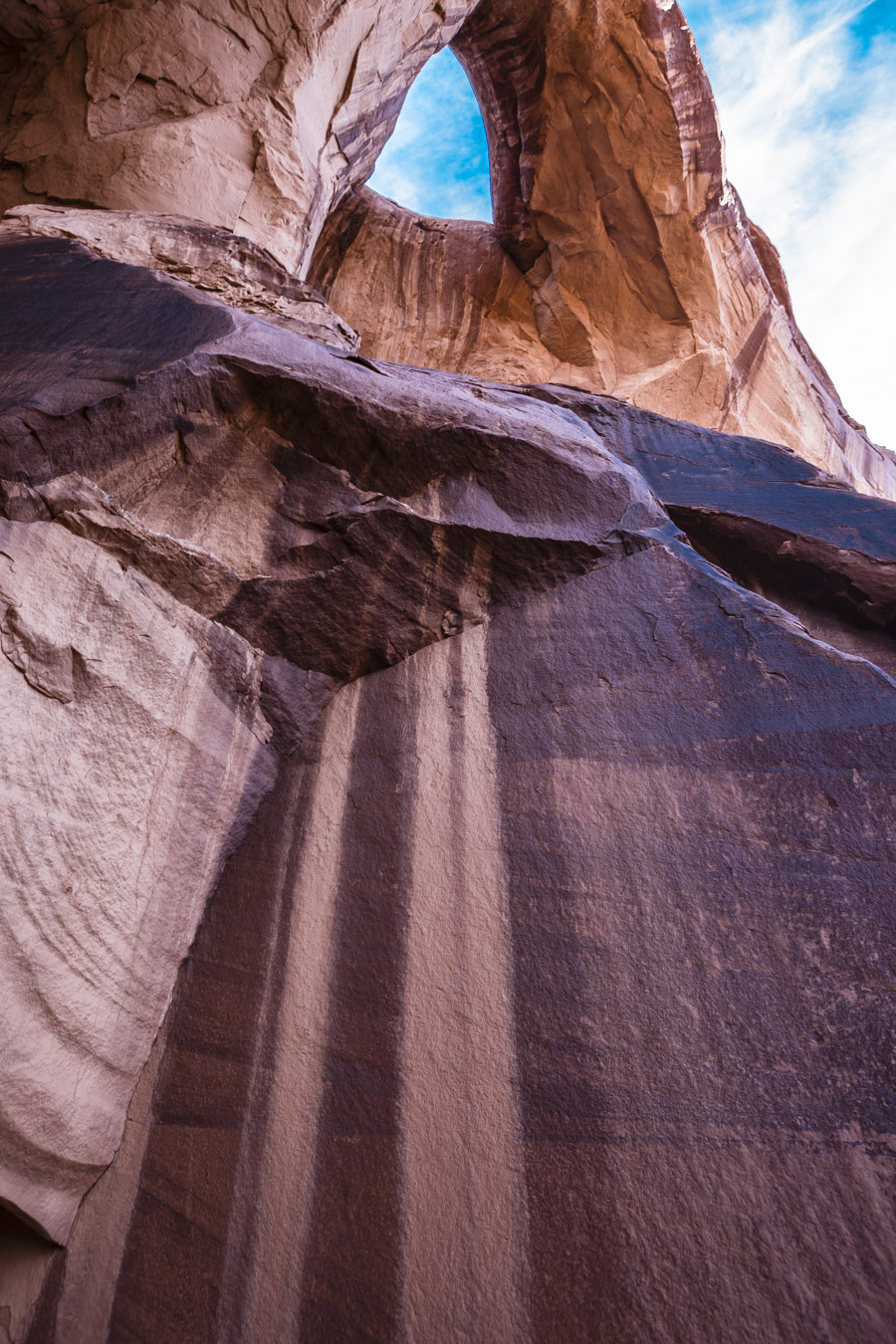
I photographed many of the petroglyphs and this is the one I liked best. I’ve stylized it a bit: the shapes and form are attributable to an artist long ago. I enhanced (?) the colours.
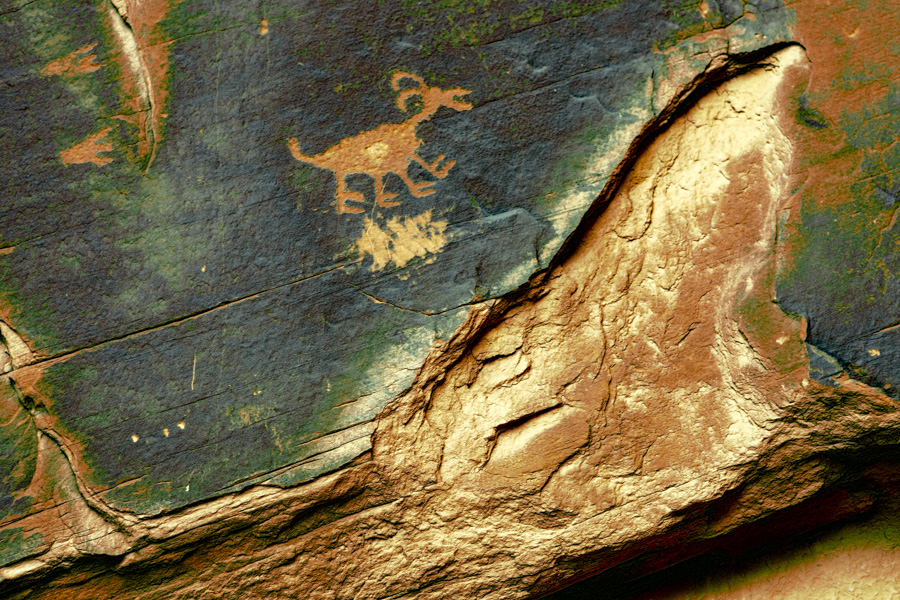
I close out today’s post with another picture taken in the area of Ear of the Wind. This is an area to the left of the hole in the rock, shown in my third photograph, above. I liked the patterns in the rock and the photographic challenge of the strong contrast between the shadowed area in the foreground and the brightly lit wall on the upper right.
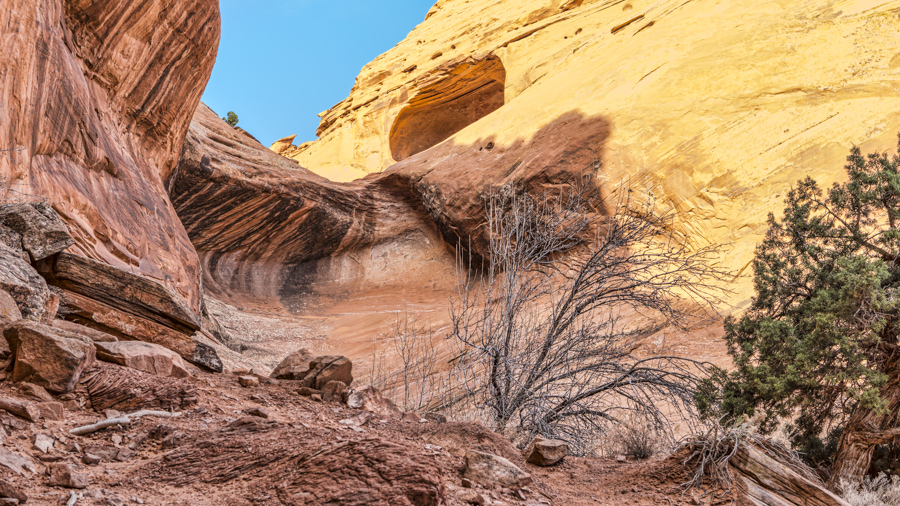
It’s always a pleasure to visit this area. I fully expect to return.

Impressive area to take photos … You bring back fond memories for Deb and I 🙂